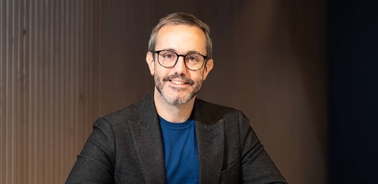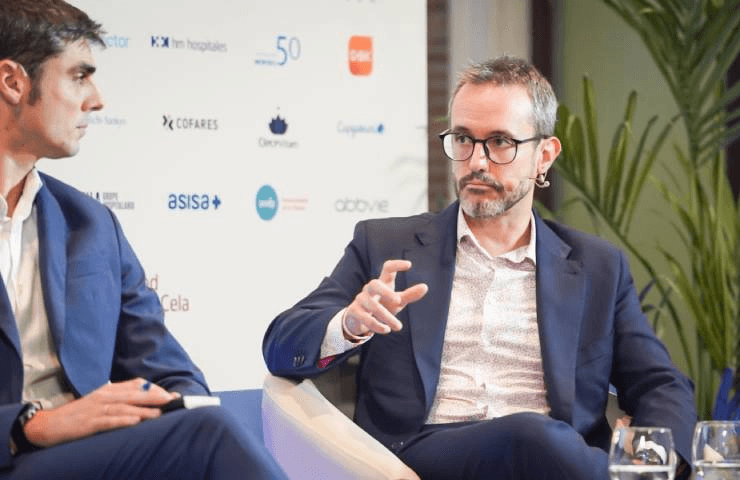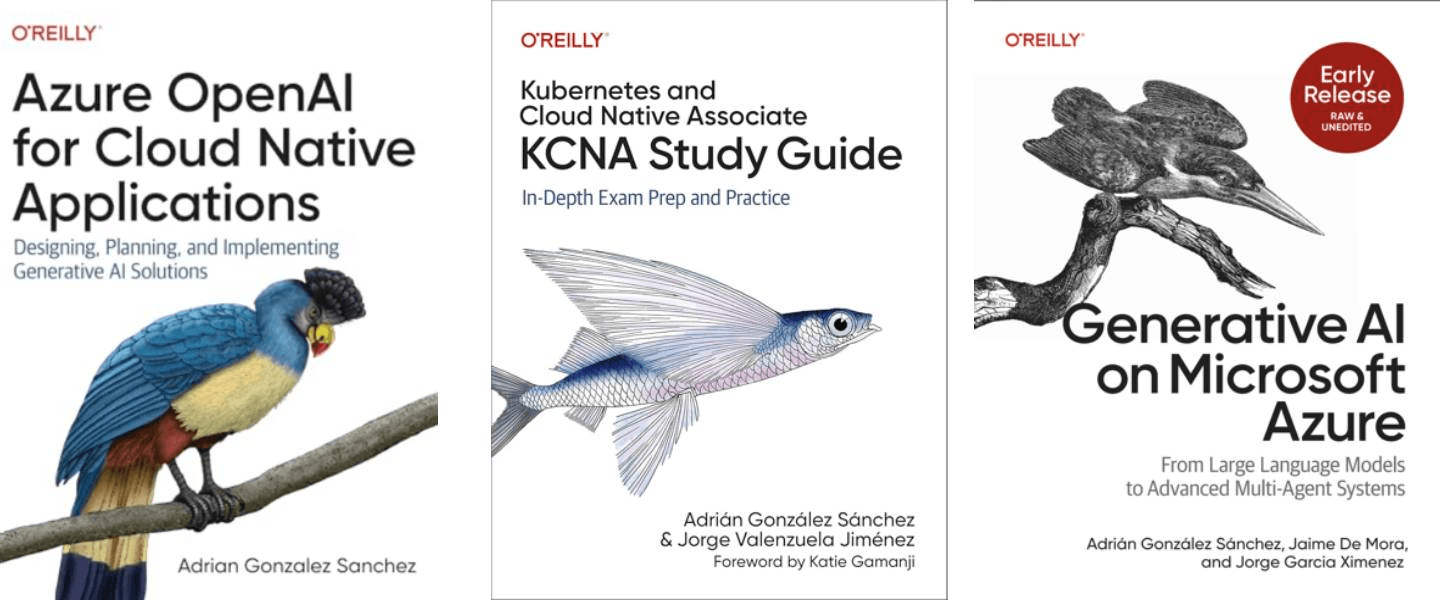Faculty Spotlight with Adrián González Sánchez

Shaping the Next Generation of AI Professionals.
"If you want something, go get it." This philosophy has guided Adrián González Sánchez from telecommunications engineering to becoming a leading voice in AI education. With studies at ParisTech and HEC Montréal, plus a career spanning France, Latin America, and Canada, he brings a unique global perspective to technology and business strategy.
Currently serving as an AI Architect at Microsoft while teaching at IE University's Master in Computer Science and Business Technology program Adrián brings extensive industry expertise to the classroom. As author of four O'Reilly technical books, he translates complex AI concepts into actionable knowledge - preparing students not just to participate in the AI revolution, but to lead it, with both technical expertise and business acumen.
Meet Adrián González Sánchez, the new Academic Director for the Master in Computer Science and Business Technology (MCSBT).
Tell us about your background and what led you to teaching.
I studied telecommunications engineering here in Spain and then developed my career across different geographies - France, Latin America and Canada. I spent most of my career outside Spain until three years ago when I returned to work with Microsoft as an AI architect.
I've combined technical and business roles throughout my career, moving between companies and experimenting in my 20s, then focusing more on cloud computing, data, and AI in my 30s. I've written four technical books with O'Reilly - you know, the ones with the cute animals on the cover. What I really enjoy is taking complex topics and translating them into something understandable for people, regardless of their background.
What makes your approach to teaching AI unique?
What I bring to the classroom is the 360-degree view of technical topics. When I'm designing an architecture in my day job, I need to think about how it works at a technical level, but also anticipate costs, legal compliance, security - all the business dimensions. That's exactly what companies are asking for today.
I've been working in AI since 2017, and I see how there's often a gap between highly technical AI education and high-level strategic discussions. I focus on that middle ground - the tactical and operational aspects that aren't always covered in traditional classes.
Your upcoming AI and Machine Learning course sounds intensive. What can students expect?
It's going to be very intense - around 15 sessions compressed into about one month, with four sessions per week starting in early October. I believe that when you create that kind of intensity, you get students' full attention. Their minds are in the right place, they're fully engaged with the material.
This intensity also sends an important signal: anyone working at companies like Microsoft, Amazon, or Google will be expected to deliver operational excellence and high impact from day one. If students really want to work in this industry, they need to be prepared for that reality.
How will the course balance theory with practical application?
We're combining practice with theory, but practice doesn't just mean programming. It also means presenting and pitching business cases for solutions - that's how you actually get a job. That's what they'll ask you in interviews.
I want to replicate real-world scenarios. Students will work in multidisciplinary groups that mirror what we see in organizations - teams with different technical and business backgrounds collaborating on projects. If you're not comfortable with programming, that's fine because your colleague handles that while you build the business case. But everyone will need to present because that's crucial in today's market.
Who is the ideal student for this program?
I'm expecting students with hybrid profiles - some mix of technical and business aspects, whether that's 10-90 or 50-50. These are very normal profiles these days. They're digital natives who already work with AI tools like ChatGPT better than I did 20 years ago.
What's important is curiosity and a growth mindset, especially for difficult-to-understand technologies like cloud, AI, and quantum computing. Students need the willingness to put in extra effort to succeed. Instead of the typical 10% top performers in a class, I want to push for 30% excellence. Why not? We have all the ingredients - good material, industry connections, people telling you exactly what to expect in interviews with big companies or startups.
Will you bring in guest speakers from the industry?
Absolutely. I'm working to arrange guests for specific topics. Students sometimes forget that their professor comes from industry - I'm just "the professor" to them. But when you bring in external people from Microsoft, Amazon, or other companies, their eyes light up. I have colleagues and friends from different companies, including competitors, so I'm planning to create those experiences depending on schedules and availability.
What advice do you have for international students coming to Madrid?
Madrid has always been cool, but it's really been discovered recently, like Lisbon was. It's a very open city - they say there's nothing more Madrid than not being from Madrid. You become a Madrileño the moment you arrive, and that's true.
It's a big city but doesn't feel massive like New York or London. It's European but has the charm of Latin culture. You have great bars, terraces, nice weather, cultural activities, and museums. Plus, you're incredibly well connected - two hours by train to Málaga or Barcelona, a short flight to Florence or London.
I'd recommend learning Spanish. I've learned that you get much better experiences by learning the local language wherever you go. The best way? Find a girlfriend or boyfriend - you'll learn like a river! And Spanish is so useful globally now.
Any final thoughts for prospective students?
This master's program is perfectly positioned. Students are learning AI with me, cloud computing with another professor, tech product management with someone else. They start connecting the dots because in the cloud, you use AI; in AI, you use cloud fundamentals. When you're creating a product, you're applying all of this.
The beauty is having all these pieces together in one program. It might take six months after finishing to fully assimilate everything, but that's when you start connecting all the pieces and realize how everything fits together.

